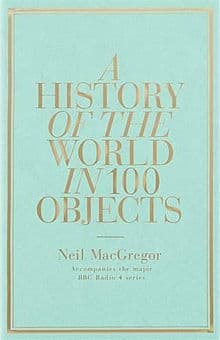
Book Review Summary: A History of the World in 100 Objects
Introduction
A History of the World in 100 Objects by Neil MacGregor is a groundbreaking book that takes readers on a journey through human history by exploring the objects that defined civilizations. With a grand sweep of human history, MacGregor presents a kaleidoscope of interconnected stories that shape our world today. From the earliest surviving tools made by human hands to objects that reflect the world we live in today, this book offers an intellectual and visual feast for readers. In this article, we will delve into the book's author, analyze common opinions, and summarize reasons for recommending A History of the World in 100 Objects.
About Neil MacGregor
Neil MacGregor, the author of A History of the World in 100 Objects, was born in Glasgow and educated at Glasgow Academy and New College, Oxford. He has a lifelong interest in art, sparked by his first encounter with Salvador Dalí's Christ of Saint John of the Cross at the age of nine. MacGregor's extensive knowledge and passion for art history led him to pursue a degree in art history at the Courtauld Institute of Art in London. He has held numerous positions in the art world, including teaching at the University of Reading and serving as the director of the National Gallery in London. MacGregor's ability to combine intellectual rigor with engaging storytelling makes him an ideal author for this ambitious exploration of human history through objects.
Analysis of Views
- Engaging Storytelling: Readers praise MacGregor's ability to bring history to life through compelling stories about objects. The book's narrative style captivates readers, making it easy to follow along and absorb information.
- Wide Range of Objects: A History of the World in 100 Objects covers a vast array of objects from different civilizations and time periods. Readers appreciate the diversity of the chosen objects, which offer insights into various aspects of human history.
- Intellectual Challenge: Some readers find the book intellectually challenging, as it requires a certain level of knowledge about history and cultural contexts. However, they appreciate the depth of analysis and the connections made between objects and historical events.
- Visual Feast: The inclusion of black and white photographs and occasional color plates enhances the reading experience. Readers appreciate the visual representation of objects and find it helpful in understanding their significance.
- Well-Researched: Many readers commend MacGregor's extensive research and attention to detail. They feel that he presents a comprehensive and well-rounded view of human history through these objects.
Reasons for Recommendation
- Accessible Approach: A History of the World in 100 Objects is recommended for readers who appreciate an accessible approach to history. The book's engaging narrative style makes it accessible to both general readers and those with a background in history.
- Broad Scope: The book covers a wide range of objects and historical events, providing readers with a comprehensive understanding of human history. It offers a unique perspective on history by focusing on objects as primary sources rather than textual records.
- Visual Appeal: The inclusion of photographs and illustrations adds visual appeal to the book, making it more engaging for readers who enjoy visual storytelling. The visual representation of objects helps readers better understand their significance and context within history.
- Intellectual Stimulation: Readers recommend A History of the World in 100 Objects for its intellectual stimulation. The book challenges readers to think critically about history and encourages them to explore connections between objects and historical events.
- Educational Value: The book is highly recommended for educators and students seeking an engaging and informative resource on human history. It offers a unique approach to teaching history by focusing on objects as primary sources and encourages critical thinking and analysis.
Conclusion
A History of the World in 100 Objects by Neil MacGregor is a captivating exploration of human history through objects that defined civilizations. With its engaging narrative style, wide range of objects, and well-researched analysis, this book offers readers an intellectual and visual feast that sheds new light on human history. Whether you're interested in history or simply seeking an engaging read, A History of the World in 100 Objects is highly recommended for its accessibility, broad scope, visual appeal, intellectual stimulation, and educational value.